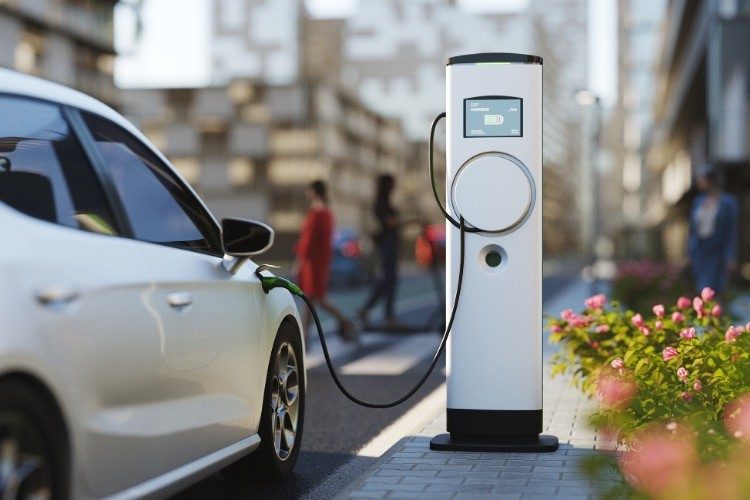
You may have noticed the subtle — and oily — shift in verbiage about the “emissions” of electric vehicles. For example, Nissan’s ad for its new Ariya electric crossover has a qualifier, in very faint (and very briefly shown) type about the latter being tailpipe emissions-free.
Italics added to highlight the etymological legerdemain.
It is of a piece with the way the attributes which formerly defined a vaccine — i.e., that it conferred immunity on the individual and prevented transmission of sickness — were altered to reduces symptoms and decreases hospitalizations.
Someone — a lawyer, probably — realized someone might sue over false advertising.
But EVs have another emissions problem that goes beyond what is emitted elsewhere, in the course of obtaining the necessary raw materials for EV battery packs, including lithium and cobalt — both of which are highly toxic and reactive (unlike carbon dioxide, which is an inert background gas necessary for life to flourish) and the “externalities” involved in powering up of these massive (1,000-plus pounds each) battery packs with electricity generated by the combustion of natural gas, coal, and fuel oil.
The high-voltage battery packs and massive electric motors that make an EV go generate an electromagnetic field (EMF), which radiates outward from the source. Cellphones emit the same thing on a much lesser scale, being much smaller (and much less powerful), but even so, it is why users are advised to keep their phones 10 inches or more away from the body — and in particular, the head — when in use.
This implies it could be dangerous to your health to not maintain social distance between yourself and your phone.
An electric car is a giant cellphone.
One you sit inside of — and the emissions generated by the high-voltage battery pack under the floorpans and the electric motor(s) that propel the vehicle are known to be powerful enough to interfere with AM radio reception, triggering customer complaints. To remedy the problem — or rather, to hide it — Ford and Tesla have deleted AM radio from their electric vehicles.
This way, people won’t notice a symptom caused by the electromagnetic fields generated by the EV and feel safe.
But is it safe?
No one knows for sure. All that is known is the radiation exists — and leaks — and that people are being exposed to it.
Most of them having no idea.
There’s an interesting insouciance on the part of the regulatory apparat with regard to these emissions. On the one hand, the apparat is as intolerant as Inspector Javert from Les Miserables to literally fractional emissions of trace gasses that are known to be inconsequential to public health. The apparat is expected to double down on its intolerance this week, when it is expected new standards will be hurled from on high that will effectively out-regulate (but not formally outlaw) the manufacture of other-than-electric cars, which are the only cars that can comply with the Javert-esque regulatory regime.
It is not enough that new cars be 98 or even 99 percent “zero emissions” — at the tailpipe. They must be 100 percent “zero emissions” (irrespective of their emissions, elsewhere).
But when it comes to electromagnetic field radiation, it might as well be 1959 — a time before cars were required to have even the most basic emissions-controls.
Perhaps because of the politics of “electrification.”
EVs are being pushed with the aggressiveness of a time-share hard-sell as the necessary cure for what doesn’t ail us — i.e., “climate change.” It is telling that — like the time-share salesman — the only things people are hearing about EVs are the good things.
But what about the not-so-good things?
Including the loss of AM radio. Which — curiously — is the bandwidth favored by non-mainstream broadcasts. AM signals travel much further than FM signals and for that reason it is possible to continue listening to an AM program “coast to coast,” a reference to the famous late-night broadcasts of Art Bell that one could listen to for hours, driving across the Nevada and New Mexico deserts — when there was almost nothing else on the dial — and nothing on FM that you could listen to for very long, before the signal began to fade.
What a subtle — and ingenious — way to get rid of something that might cause problems for the people hard-selling all of this.
It’s of a piece with the way the drugs that — as it turns out — aren’t vaccines were misleadingly sold to people by dishonest and (arguably) malicious people.
EVs and the drugs-that-aren’t-vaccines have one more thing in common, too.
The drugs-that-aren’t-vaccines and EMF-emitting EVs are being forced on people who are “taking” them under duress — and without being apprised of the risks.
It makes you wonder why that is.
Or at least, it probably ought to.


